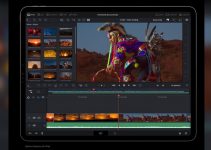I guess it’s safe to say that Adobe After Effects already provides all the necessary tools and assets that the majority of content creators and VFX artists will ever need to turn even the boldest and most challenging visual concepts they have in mind into reality. Once you’ve mastered the tools behind this powerful compositing platform, you’re well on your way to creating stunning visual effects right from the comfort of your home swivel chair.
An excellent example of what you could easily accomplish within After Effects is the following mirror trick showcased in the video below produced by Ian Sansavera of Learn How To Edit Stuff. In the video, the talented filmmaker is seen washing his hands in front of a mirror when all of a sudden his reflection starts talking to the camera. Even though the effect may seem a bit complicated at first, it’s actually very simple to pull off.
To get the most out of this post-production technique, first, you need to shoot your footage properly. To do so, mount your camera on a tripod and position it in a way so that you can see as much of the mirror as possible. Meanwhile, be careful and try to avoid having any equipment reflections visible in your shot.
Furthermore, it’s paramount not move the camera during the take unless you want to have some serious troubles later on in the edit. Also, rehearse the actions you are going to perform until you feel comfortable enough with their execution. Additionally, make sure that the timing is right between the shots of yourself and your reflection and avoid moving any objects from the scene mid-take (unless that’s what you’re going for intentionally).
Another quick tip that Sansavera gives in the video suggests performing everything in one take if possible. This step will make organizing your footage easier since all the action will take place in a single clip that you can just cut in post. Once you’ve captured all your footage, create a new composition in Adobe After Effects and import the material into the program. Then add the clip to the composition and cut it accordingly so that your “reflection” take and “reality” take are timed correctly. If you need to see both clips at the same time, a useful trick is to lower the opacity of the top layer clip.
After adjusting the timing of the two videos, create a mask around the mirror on the clip where you act as your reflection. At this point, if you were careful about your actions and how you move the camera, you don’t have to do much more work.
If you make any movements that overlap the mask/the mirror, you will need to create more keyframes and animate the mask path so that the mirror illusion isn’t broken. Also, set the Mask Feather to 10 so that the edges of your mask are smooth enough, thus helping you blend the two clips better.
To sell the effect and add an extra ounce of realism, you could add some camera shake to your shot. First, export your clip into a movie file and then bring it inside of Adobe Premiere Pro. Afterward, go to the Effects tab and choose your camera shake preset of choice. In this particular case, Sansavera utilizes the Subtle Camera Shake preset from Rampant Design’s HandHeld Camera Preset pack.
All in all, by simply using the built-in masking tool and taking some time and effort to perfect the technique, you can polish off the effect and sell the illusion with ease. Last but not least, don’t forget to check out and subscribe to Ian Sansavera’s YouTube channel for more creative post-production tips and tricks.
[source: Learn How To Edit Stuff]
Disclaimer: As an Amazon Associate partner and participant in B&H and Adorama Affiliate programmes, we earn a small comission from each purchase made through the affiliate links listed above at no additional cost to you.



